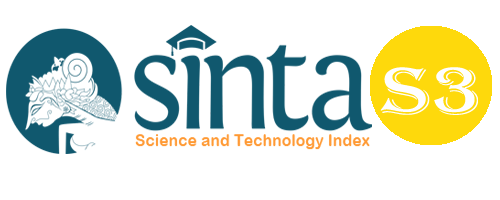Development of Blended Learning-Based Learning Tools to Practice Students' Scientific Argumentation Ability
Abstract
The Covid-19 pandemic has resulted in a shift in the learning model from online to offline. As is the case with science lessons, especially in photosynthesis material where it is necessary to synchronize effective learning models in order to improve the stability of scientific argumentation. The purpose of this study is to produce Blended learning-based learning tools to train students' scientific argumentation skills. This research method uses the 4P method with a trial design using experimental research with the One Group Pretest Postest Design model. The results showed that (1) the learning devices used were included in the very valid category, (2) The practicality of the learning device was obtained from RPP 1 with a percentage of 95% (Online) and from RPP 1 with a percentage of 98% (Offline), and (3) The effectiveness of the learning device was reviewed from the argumentation value and the value of learning outcomes was included in the high category with a score obtained from student responses with a percentage of 94%.
Keywords
Full Text:
PDFReferences
Borich, G. D. (1996). Effective Teaching Methods Third Edition. Prentice Hall.
Duschl, R. A. (2007). Taking science to school: Learning and teaching science in grades k-8. National Academies Press.
Farida, I. (2015). Profil Keterampilan Argumentasi Siswa Pada Konsep Koloid Yang Dikembangkan Melalui Pembelajaran Inkuiri Argumentatif. Edusains, 6(1), 31–40. https://doi.org/10.15408/es.v6i1.1098
Ibrahim, M. (2002). Pembelajaran Kooperatif. University Press.
Kamarga, H. (2002). Belajar Sejarah melalui e-learning; Alternatif Mengakses Sumber Informasi Kesejarahan. Inti Media.
Katchevich, D., Hofstein, A., & Mamlok-Naaman, R. (2013). Argumentation in the Chemistry Laboratory: Inquiry and Confirmatory Experiments. Research in Science Education, 43(1), 317–345. https://doi.org/10.1007/s11165-011-9267-9
Koran, J. K. C. (2002). Aplikasi E-Learning dalam Pengajaran dan pembelajaran di Sekolah Malasyia. Universitas Pendidikan Indonesia.
Korucu, A. T., & Alkan, A. (2011). Differences between m-learning (mobile learning) and e-learning, basic terminology and usage of m-learning in education. Procedia - Social and Behavioral Sciences, 15, 1925–1930. https://doi.org/10.1016/j.sbspro.2011.04.029
Kuhn, D., & Dean, D. (2004). Connecting scientific reasoning and causal inference. Journal of Cognition and Development, 5(2), 261–288. https://doi.org/10.1207/s15327647jcd0502_5
Kuhn, L., & Reiser, B. J. (2004). Students Constructing and Defending Evidence-Based Scientific Explanations. Annual Meeting of the National Association for Research in Science Teaching, Dallas, TX, 1–35.
Mustaqim, T. A., Zulfiani, & Herlanti, Y. (2014). Identifikasi Miskonsepsi Siswa dengan Menggunakan Metode Certainty of Response Index (CRI) pada Konsep Fotosintesis dan Respirasi Tumbuhan Tri Ade Mustaqim, Zulfiani, Yanti Herlanti. Edusains, 6(2), 146–152.
Ningrum, P. A., et al. (2020). The Potential of Poverty in the City of Palangka Raya: Study SMIs Affected Pandemic Covid 19. Budapest International Research and Critics Institute-Journal (BIRCI-Journal) Volume 3, No 3, Page: 1626-1634
Saleh, A., Mujahiddin. (2020). Challenges and Opportunities for Community Empowerment Practices in Indonesia during the Covid-19 Pandemic through Strengthening the Role of Higher Education. Budapest International Research and Critics Institute-Journal (BIRCI-Journal). Volume 3, No 2, Page: 1105-1113.
Sihombing, E. H., Nasib. (2020). The Decision of Choosing Course in the Era of Covid 19 through the Telemarketing Program, Personal Selling and College Image. Budapest International Research and Critics Institute-Journal (BIRCI-Journal) Volume 3, No. 4, Page: 2843-2850.
Sitepu, B. P. (2012). Penulisan Buku Teks Pelajaran. Rosda SN-DIKTI.
Wilson, K. (2016). Critical reading, critical thinking: Delicate scaffolding in English for Academic Purposes (EAP). Thinking Skills and Creativity, 22, 256–265. https://doi.org/10.1016/j.tsc.2016.10.002
DOI: https://doi.org/10.33258/birci.v5i3.5977
Article Metrics
Abstract view : 45 timesPDF - 17 times
Refbacks
- There are currently no refbacks.

This work is licensed under a Creative Commons Attribution-ShareAlike 4.0 International License.

This work is licensed under a Creative Commons Attribution-ShareAlike 4.0 International License.

_.gif)

















_.gif)



